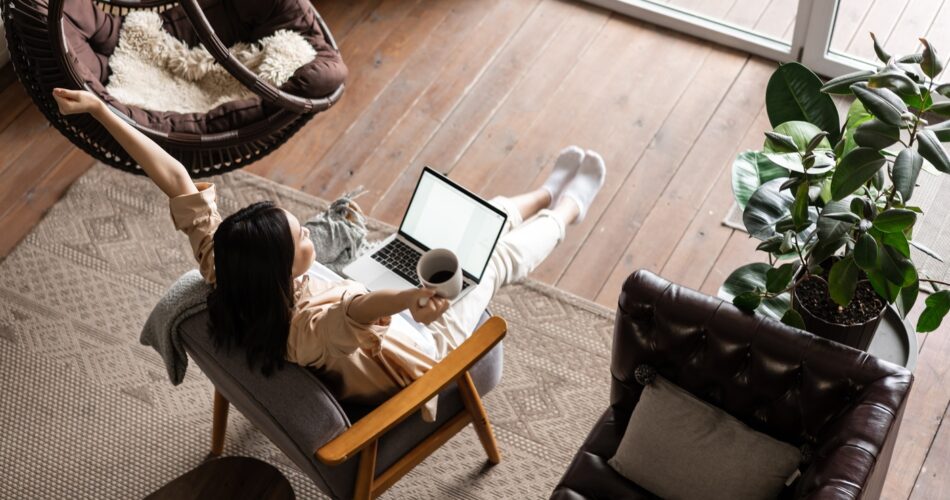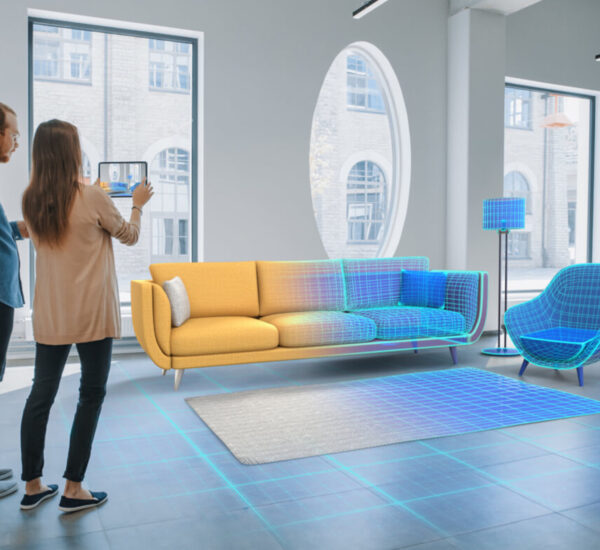Home is where we feel most at ease—where we unwind after long days and seek refuge from the world. The design of a home plays a significant role in fostering this sense of comfort. The concept of coziness in home design is more than just an aesthetic preference; it taps into the psychology of comfort, making us feel safe, relaxed, and emotionally nourished. In this post, we will explore the psychology of comfort in home design and how we can use design principles to create spaces that evoke warmth, relaxation, and a sense of belonging.
1. The Psychological Impact of Color
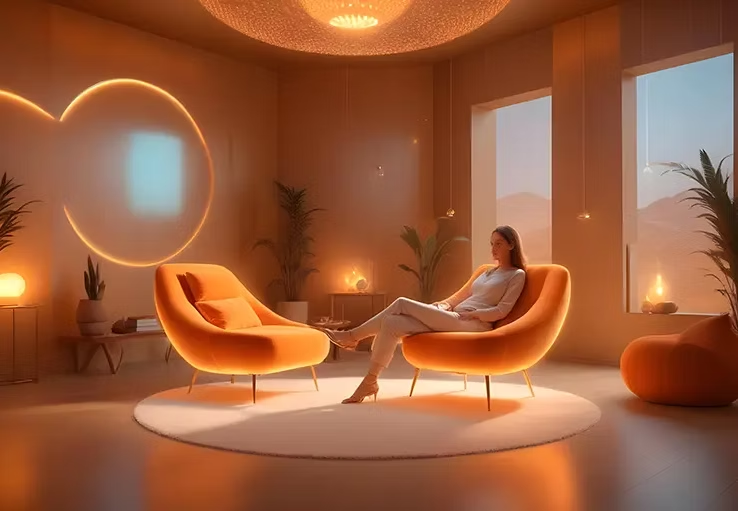
Colors have a profound effect on our mood and emotions. The psychology of color is crucial in creating cozy spaces, as the right hues can influence how we feel in a room. When designing for comfort, soft, warm, and earthy tones tend to evoke feelings of calmness, security, and intimacy.
- Warm Colors: Shades like soft beige, muted yellows, warm greys, and earthy browns can create a welcoming, relaxing atmosphere. These tones often remind us of nature and warmth, promoting a sense of safety and comfort.
- Cool Colors: While cool colors like blues and greens are calming, they tend to have a more serene and tranquil effect, which can be ideal for spaces meant for relaxation, like bedrooms or bathrooms. However, too much of these tones might create a detached or overly subdued environment.
- Accents and Contrasts: A pop of color can introduce vibrancy and personality. Adding rich, cozy colors like deep burgundy, forest green, or navy blue through accessories, throw pillows, and rugs can elevate the coziness without overwhelming the space.
- Example in Architecture:
- A Cozy Living Room: Imagine a living room with warm, neutral walls, complemented by rich, textured furniture in deep jewel tones like mustard yellow or burnt orange. This combination creates a balance between warmth and vibrancy, fostering an inviting and relaxed environment.
- Why It Matters: Color sets the emotional tone for a space. By choosing the right palette, you can create an environment that feels cozy and comforting, aiding in relaxation and emotional well-being.
2. Textures That Promote Comfort
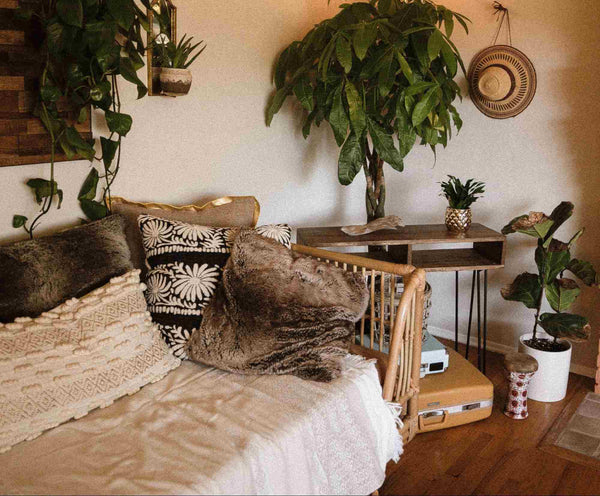
The tactile experience of a space—how it feels to touch and interact with various surfaces—is a major contributor to its coziness. Soft, plush textures, natural materials, and layered fabrics make a space feel more inviting and comfortable.
- Soft Fabrics: Items like plush throw blankets, velvet cushions, and soft wool rugs instantly add a sense of warmth and tactile comfort. These items invite you to relax, whether you’re curling up with a good book or resting after a long day.
- Natural Materials: Wood, stone, and ceramics bring a natural, organic feel to a space. The warmth of wood furniture or flooring, the smoothness of stone countertops, and the roughness of clay or pottery add layers of texture that ground a space in nature.
- Layered Textures: Combining different textures—such as a soft wool rug on a hardwood floor or a leather chair with a knitted throw—adds depth and interest to a room, creating a more immersive and cozy environment.
- Example in Architecture:
- A Cozy Bedroom: A bed draped with a thick wool blanket, piled with soft cotton pillows, and surrounded by wooden furniture with natural grain patterns offers a combination of tactile pleasures that promote comfort and relaxation.
- Why It Matters: Textures enhance the physical sensation of comfort in a space. Layering different textures in furniture, flooring, and accessories helps create a space that invites touch and relaxation, adding to the cozy atmosphere.
3. Lighting for Warmth and Atmosphere
Lighting is one of the most powerful tools in home design when it comes to creating a cozy atmosphere. The right lighting can instantly transform the mood of a room, making it feel warm, inviting, and comfortable. It’s not just about the amount of light, but the quality and warmth of the lighting that matters.
- Warm Light: Soft, warm lighting with a yellow or amber hue creates a more intimate, welcoming atmosphere compared to harsh, cool light. Consider using incandescent or warm LED bulbs for table lamps, pendant lights, and chandeliers.
- Layered Lighting: Instead of relying on one central light source, incorporate multiple light sources at different levels. Use table lamps, floor lamps, sconces, and candles to create a soft, layered effect that adds depth and warmth to the space.
- Natural Light: Maximizing natural light during the day by using light, airy curtains or opening up windows can boost your mood and enhance the sense of space. However, it’s important to balance natural light with cozy, ambient lighting during the evening to maintain comfort as the day fades.
- Example in Architecture:
- A Cozy Dining Area: In a dining space, pendant lights with warm, amber-toned bulbs can be paired with the glow of candles on the table, creating an intimate and cozy dining experience, ideal for gatherings or quiet meals.
- Why It Matters: Lighting plays a critical role in shaping our emotional response to a space. The right lighting not only enhances physical comfort but also impacts how relaxed and connected we feel in a room.
4. Furniture That Invites Relaxation
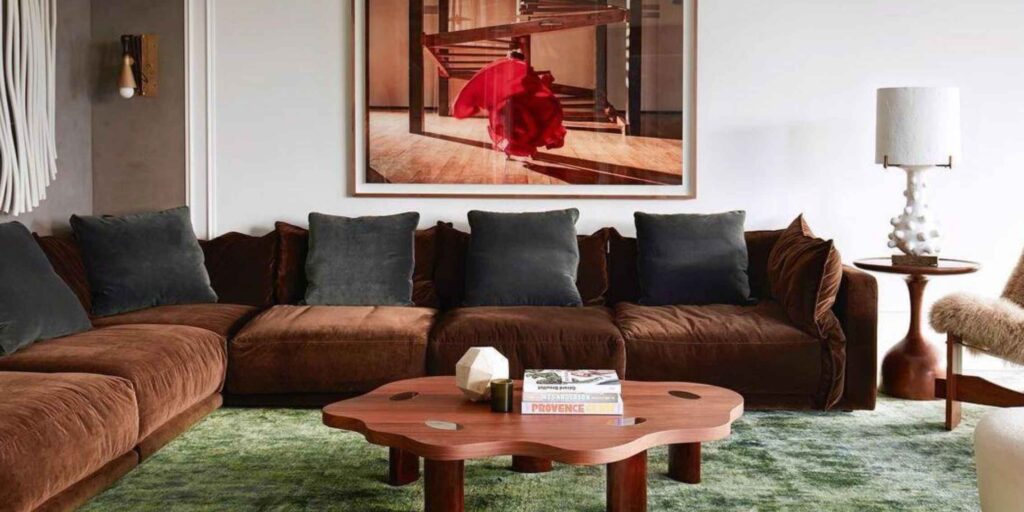
The furniture in a space has a direct effect on both its comfort and its ability to feel “cozy.” To create a truly inviting space, choose furniture that encourages relaxation and is conducive to lounging, socializing, and unwinding.
- Comfortable Seating: Sofas and chairs with soft upholstery and ample cushions are essential for creating cozy spaces. Deep seating and plush cushions make it easier to relax and sink in, whether you’re reading, chatting with friends, or taking a nap.
- Multipurpose Furniture: Consider incorporating furniture that serves multiple functions, such as ottomans that double as coffee tables, or couches that transform into guest beds. These types of pieces contribute to a relaxed, functional environment that doesn’t feel cluttered.
- Personalized Touches: Choose furniture that suits your personal style, such as vintage pieces, handmade furniture, or anything that brings a sense of comfort and familiarity to the space. Personal touches can make the space feel more like “home.”
- Example in Architecture:
- A Cozy Living Room: A deep, sectional sofa in soft, neutral fabric piled with an array of pillows and throws invites you to stretch out and relax. A coffee table that doubles as storage or a side table with a book collection further adds to the homey, lived-in feel.
- Why It Matters: Furniture that prioritizes comfort encourages relaxation and unwinding. Thoughtfully chosen pieces that fit your lifestyle and comfort preferences are key in crafting spaces that feel cozy and personalized.
5. Creating a Sense of Sanctuary and Personal Space
A cozy space should be a sanctuary—a place where you feel safe, relaxed, and protected from the outside world. The concept of psychological comfort goes beyond just physical elements like color and texture. It’s about creating an environment that allows for peace and reflection, making it emotionally nourishing.
- Defined Spaces: Clearly defined areas within a home allow for distinct zones where you can retreat to relax, work, or socialize. Whether it’s a reading nook by the window, a cozy corner with a chair, or a private meditation space, having areas dedicated to specific activities creates a sense of sanctuary.
- Personalized Details: Add elements that reflect your personality and bring comfort, such as family photos, favorite artworks, or items that evoke positive memories. Personal touches help make a space feel truly like home, offering comfort through familiarity.
- Example in Architecture:
- A Reading Nook: A window seat filled with plush pillows, soft lighting, and nearby bookshelves creates a small sanctuary within the larger home. This dedicated space provides a cozy escape for quiet reflection or leisure reading.
- Why It Matters: Creating a space that fosters a sense of retreat and relaxation promotes emotional well-being. When a space feels like a sanctuary, it allows us to recharge and feel connected to ourselves and our surroundings.
Conclusion
The psychology of comfort in home design is all about crafting spaces that nurture both our physical and emotional well-being. By considering elements like color, texture, lighting, furniture, and personalization, we can create cozy environments that evoke warmth, safety, and relaxation. Whether you’re designing a bedroom, living room, or even a small reading nook, the key is to make the space feel inviting, comforting, and uniquely yours. As we continue to seek comfort in our fast-paced, often chaotic lives, home design can be a powerful tool in helping us cultivate peace, contentment, and a true sense of belonging.

